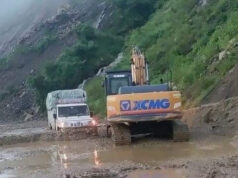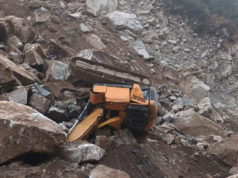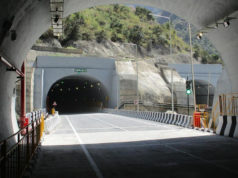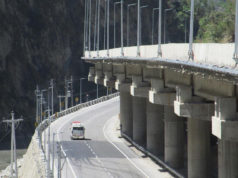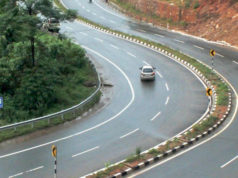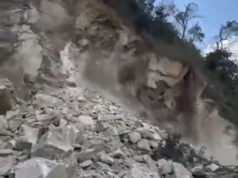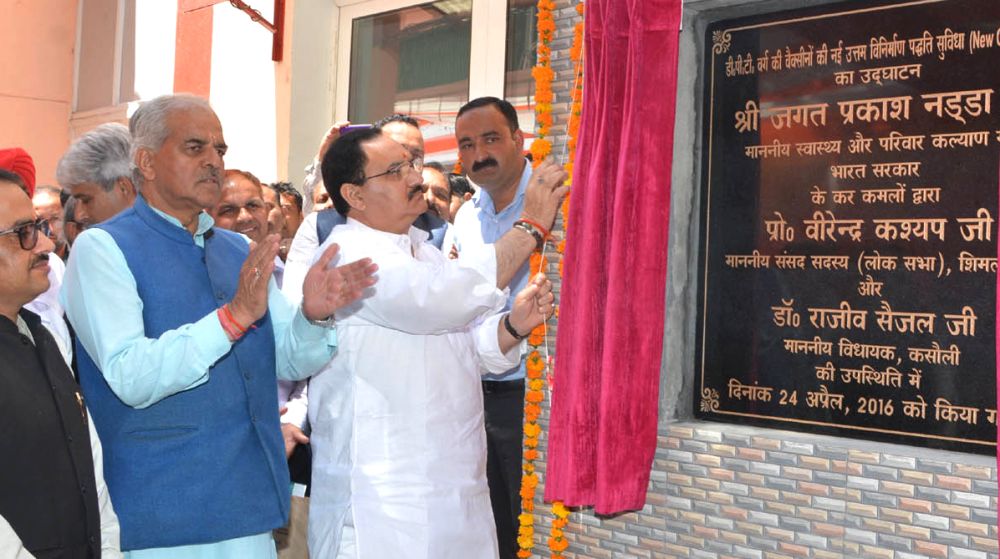Mandi – The retaining wall near Char Mile on the Chandigarh-Manali National Highway (NH) between Mandi and Pandoh has completely collapsed, causing significant traffic disruptions. Traffic is currently moving in one direction only, with the risk of a full highway closure posing a potential challenge for travellers heading to Kullu and Manali.
The retaining wall, which had initially sunk due to prior rain damage, completely gave way on Thursday. The collapse has raised concerns about the stability of the highway and the potential for further closures. If the highway closes entirely, it will create substantial inconvenience for daily commuters, including school and college students and workers who travel this route regularly.
The wall was constructed by the KMC company as part of the highway’s four-lane expansion project. Despite the substantial investment in its construction, the wall showed signs of instability even before the rainy season began. This recent collapse has intensified scrutiny over the quality of construction and has prompted calls for a thorough investigation.
Local residents have expressed frustration and concern over the situation, emphasizing the critical need for durable infrastructure. Many people from Pandoh and surrounding areas rely on this highway to reach Mandi for daily work and education. The disruption has significantly impacted their daily routines.
The National Highways Authority of India (NHAI), along with the district administration and KMC, faces the urgent task of finding a viable solution. The immediate priority is to ensure that traffic continues to flow, albeit slowly, while a permanent and reliable repair is implemented.
The collapse of the retaining wall underscores the importance of robust and reliable infrastructure, especially on key national highways. As the administrations work towards addressing the issue, the focus remains on maintaining connectivity and safety for all travellers on this crucial route. In the meantime, travellers are advised to use alternative routes where possible and to plan for potential delays.


